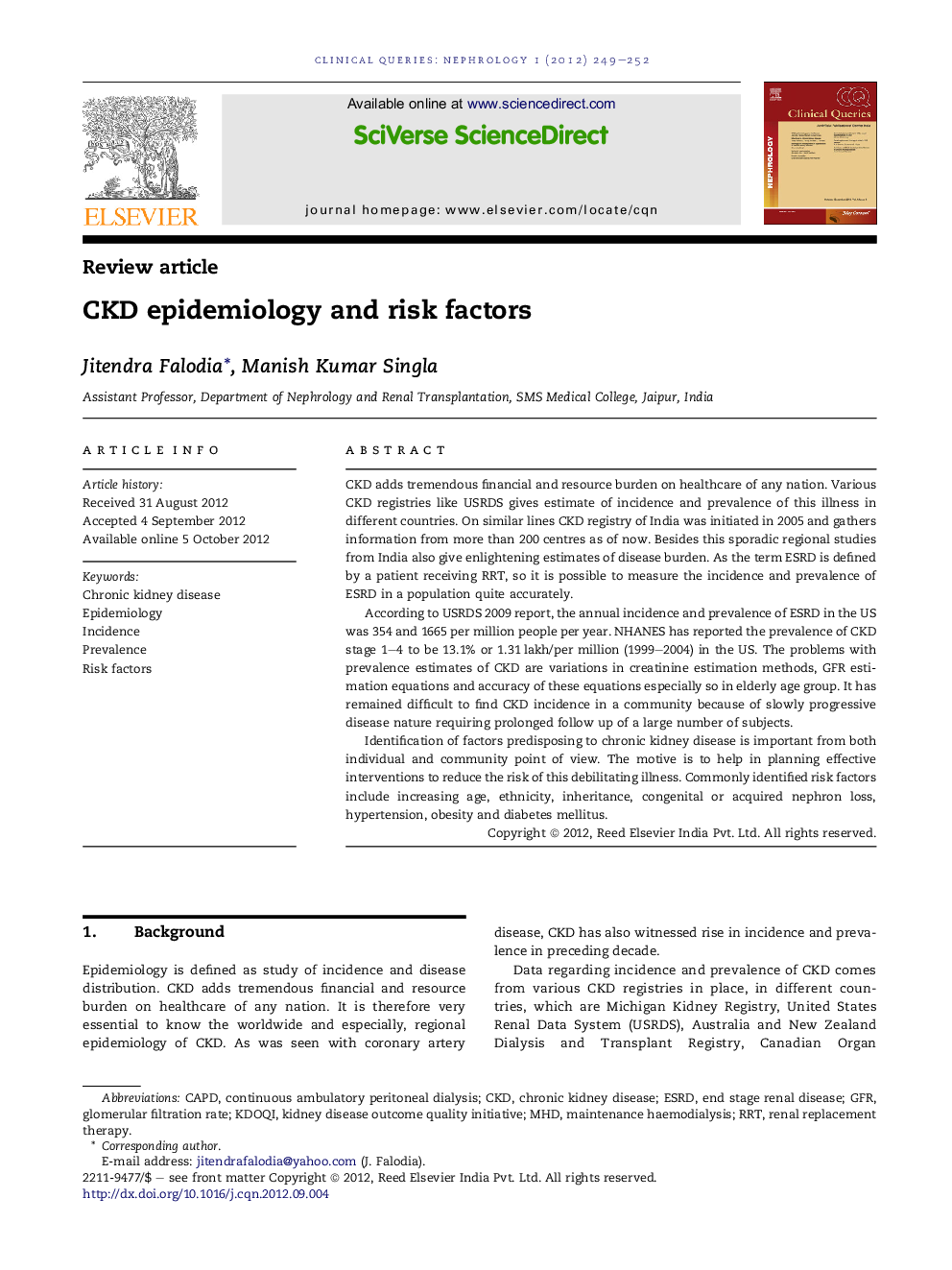| Article ID | Journal | Published Year | Pages | File Type |
|---|---|---|---|---|
| 3108025 | Clinical Queries: Nephrology | 2012 | 4 Pages |
CKD adds tremendous financial and resource burden on healthcare of any nation. Various CKD registries like USRDS gives estimate of incidence and prevalence of this illness in different countries. On similar lines CKD registry of India was initiated in 2005 and gathers information from more than 200 centres as of now. Besides this sporadic regional studies from India also give enlightening estimates of disease burden. As the term ESRD is defined by a patient receiving RRT, so it is possible to measure the incidence and prevalence of ESRD in a population quite accurately.According to USRDS 2009 report, the annual incidence and prevalence of ESRD in the US was 354 and 1665 per million people per year. NHANES has reported the prevalence of CKD stage 1–4 to be 13.1% or 1.31 lakh/per million (1999–2004) in the US. The problems with prevalence estimates of CKD are variations in creatinine estimation methods, GFR estimation equations and accuracy of these equations especially so in elderly age group. It has remained difficult to find CKD incidence in a community because of slowly progressive disease nature requiring prolonged follow up of a large number of subjects.Identification of factors predisposing to chronic kidney disease is important from both individual and community point of view. The motive is to help in planning effective interventions to reduce the risk of this debilitating illness. Commonly identified risk factors include increasing age, ethnicity, inheritance, congenital or acquired nephron loss, hypertension, obesity and diabetes mellitus.
